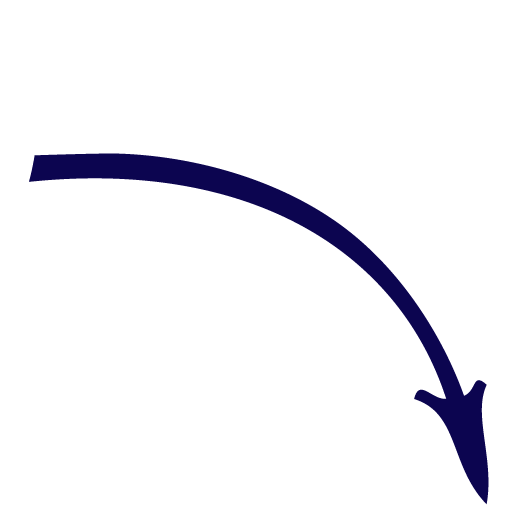How to Avoid Creating Unhelpful Content with Generative AI.
Generative AI is changing the way people create content, providing tools to simplify processes and to help with creativity and ideas. However, without careful management, this technology can lead to the production of ‘thin content’—superficial material that lacks depth and fails to engage or benefit your website visitors or target market, whether it’s used for SEO, social media, or other forms of content.
The quality of content generated by AI directly correlates to the quality of the input it receives. By focusing on creating thoughtful, detailed prompts and clearly defining your objectives, you can guide the AI to produce more helpful, insightful content that meets the needs of your audience and enhances your content strategy.
This blog post is an introduction on to how to avoid creating unhelpful content with generative Ai.
What is Thin Content?
Thin content describes web pages that provide little to no meaningful value to visitors. These pages typically fail to address users’ search intents or assist them in accomplishing tasks. While they may have a low word count, thin content can also include longer pages or posts that are poorly written with many errors and lack a clear message, copied from other sites, cluttered with excessive ads or spammy links, or auto-generated by software or code.
With the March 2024 Core Update from Google targeting low-quality content and implementing new policies on spam to counteract manipulative techniques, it is more important than ever to publish high quality content that adds value to the reader and addresses search intent.
Here’s why thin content is detrimental:
- Fails Google’s E-E-A-T Test: Expertise, Authoritativeness, Trustworthiness, and Experience (E-E-A-T) are crucial for Google’s search engine ranking. Thin content fails this test miserably as it lacks the depth and unique perspective that establish expertise.
- Doesn’t Satisfy User Intent: Searchers seek valuable information that solves their problems. Thin content offers nothing new, leaving users frustrated and likely to abandon your site.
- Hurts Your Brand Reputation: Thin content screams “lazy” and reflects poorly on your brand. Users will associate your company with low-quality information.
Bad Prompts and the Downside of Generative AI Tools.
Generative AI tools are transforming content creation by enabling rapid production of articles and blog posts. However, when used carelessly, they can also lead to low-quality content. Many users, whether pressed for time or looking to maximise output with minimal effort, often resort to feeding vague or overly broad prompts into AI systems. The result is typically generic, recycled content that lacks depth, insight, or real value. Such thin content not only fails to engage readers but also falls short of search engine standards, particularly in terms of SEO. This practice not only diminishes the potential benefits of AI but also risks harming the credibility of the content producer and could potentially lead to a website being overlooked in search results, consigned to what might be termed Google’s graveyard of forgotten websites.
Bad Prompt Example.
If we were to write a post about “The best hiking tracks on the Central Coast”, a poor example of a prompt for generating content about this topic might look like this:
“Write about hiking tracks on the Central Coast.“
This prompt is vague and lacks specific details that wouldn’t help an AI generate meaningful, unique, and engaging content. It doesn’t specify what type of information is needed (e.g., difficulty levels, scenic views, accessibility), nor does it ask for any unique insights that might distinguish the tracks from one another. As a result, the AI might produce generic, superficial content that fails to engage readers or provide valuable information. AI-generated content can often be full of filler or fluff, phrases that sound impressive but lack substance. This does nothing to convince search engines or users that your content is valuable.
Good Prompts and how AI Can Boost Your Content Creation Efforts.
Going back to the “best hiking tracks on the central coast” scenario. This time, you provide the AI with specific prompts:
- Focus on lesser-known trails for experienced hikers.
- Include unique challenges and scenic highlights for each trail.
- Highlight eco-friendly practices for responsible hiking.
- Introduce specific hiking tracks on the Central Coast
This focused approach helps the AI generate a well-rounded, informative blog post that caters to a specific audience. However, to truly unleash the potential of AI in content creation, you must invest effort in the prep work. Conducting thorough research and providing detailed prompts primes the AI tool to deliver the best possible output. Additionally, specifying the desired tone, style, and structure of the content can further guide the AI. Whether you’re aiming for a professional, conversational, or persuasive tone, clarifying these aspects helps the AI align its output more closely with your expectations and the needs of your audience.
Good Prompt Example.
After priming the AI with information about the hiking tracks on the Coast, a good example of a prompt would be:
“Create an engaging, easy-to-read guide on the best hiking tracks on the Central Coast. I’d like it to cover both easy and moderately difficult trails.
Please include:
– Unique Features: Describe the dramatic ocean views along the Bouddi Coastal Walk, the family-friendly nature of The Coast Walking Track, the stunning panoramas from Patonga to Pearl Beach, the lush rainforest vibes of the Girrakool Loop Track, and the challenging yet rewarding trek up Maitland Bay and Mount Bouddi Loop.
– Practical Tips: Offer advice on things like what to bring, trail etiquette, and safety.
– Best Times to Visit: Suggest the ideal times for visiting these trails, considering factors like weather and seasonal views.
– Wildlife and Natural Attractions: Mention any common wildlife sightings and natural highlights that hikers might enjoy.
Make sure to keep the tone conversational and the format reader-friendly, with clear headings and bullet points where applicable.”
Review AI Content
After generation, it’s crucial to review and edit the content based on the specific nuances of the topic you are writing about. This ensures that the final piece not only aligns with your content goals but also resonates authentically with your audience.
How AI can help to Write Better Content.
Here’s how AI can be your content creation partner:
- Brainstorming Ideas: Stuck in a creative rut? Use AI to generate topic suggestions and overcome writer’s block.
- Content Outlines: Get a jumpstart on your writing by letting AI create a basic outline with headings and subheadings.
- Fact-Checking and Research: Unsure about a specific detail? Use AI to quickly verify information and gather relevant data. Tools like Harpa AI are exceptionally good at giving you quick info about a website, enabling you to integrate timely and relevant information into your content seamlessly.
- Extracting Information from Documents: When you need to pull information from dense material, AI tools like ‘Ask Your PDF‘ can be invaluable. They allow you to summarise PDF documents and ask specific questions to quickly and easily extract the information you need, streamlining your research process and saving you considerable time.
Final Thoughts: Use AI with Care for Quality Content
AI can be a valuable tool for content creation, and when used properly, it can significantly enhance your website’s performance. However, this doesn’t mean you should generate thousands of articles solely through AI.
AI tools are not flawless and require human oversight. The human touch remains crucial for the effectiveness of your marketing campaigns. You must verify facts, attribute sources accurately, and adhere to Google’s E-E-A-T criteria to develop a robust content strategy that withstands algorithm updates.
In my view, using AI to generate content is a sound strategy, but it demands active involvement and work to ensure you prime your ai tool first to achieve the best output.
Generative AI offers huge potential, but it is indeed a tool, not a magic content creator. Remember to focus on quality, not quantity, aiming for informative and engaging content that addresses the users search intent. Don’t rely on generic prompts; instead, provide detailed, specific instructions and desired outcomes. Since AI output isn’t perfect, always make time to edit and verify the content. Most importantly, human expertise still matters; AI can’t replace your unique knowledge and brand voice. Inject your personal insights for a distinctive perspective.
By using AI responsibly and focusing on quality content, you can leverage this powerful tool to create a content marketing strategy that not only benefits your business but also genuinely engages your audience.





